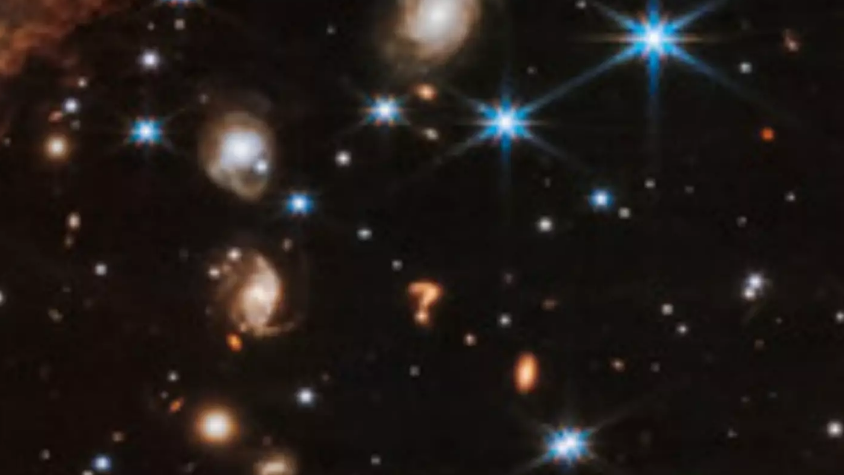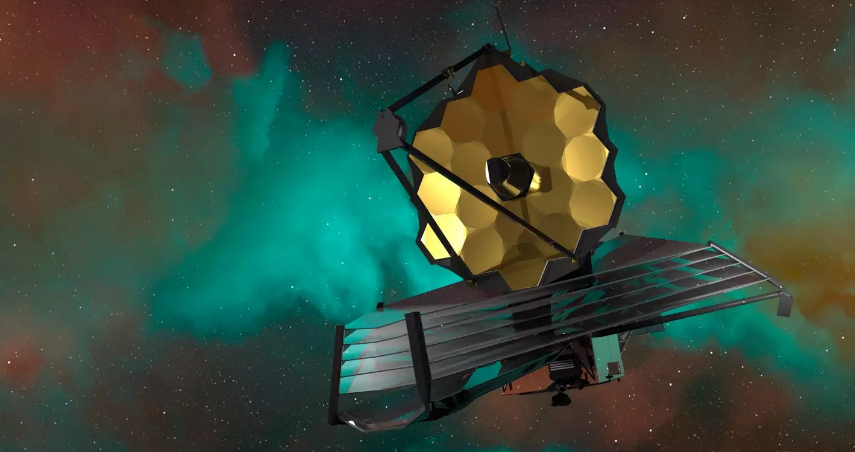How the James Webb Space Telescope Unveiled a Cosmic Mystery: The Enigmatic Question Mark in Deep Space
The James Webb Space Telescope, with its eye on the cosmos, has unveiled a celestial mystery that has captured the imagination of scientists and space enthusiasts alike. Among the myriad wonders it has revealed, one standout is a peculiar shape resembling a question mark, adding to the allure of deep space exploration.
Gazing into the vastness of space, illuminated by distant stars and planets millions of light years away, is a nightly spectacle that fills us with wonder. The James Webb Space Telescope, a marvel of technology valued at $10 billion (£7.88 billion), expands our view beyond what the naked eye can behold. Its high-tech Near-InfraRed Camera (NIRCam) has been instrumental in capturing breathtaking images of distant cosmic phenomena.
Over the past two years, Webb has beamed back awe-inspiring discoveries, from distant galaxies like the 'Cigar Galaxy' located 12 million light years away, to detecting light on a planet reminiscent of Earth. Its contributions to black hole research have also been groundbreaking, unveiling phenomena that were once deemed unimaginable by scientists.
One recent image released by the European Space Agency (ESA) showcases two nascent stars forming approximately 1,470 light years from Earth. Amidst this stellar spectacle lies a small yet intriguing orange marking, resembling a tilted question mark.
While the exact nature of this enigmatic object remains uncertain, experts have offered insights into its possible identity. Representatives from the Space Telescope Science Institute (STScI) in Baltimore, overseeing Webb's scientific endeavors, speculate that it could be a distant galaxy or a result of interacting galaxies, with their gravitational dance possibly shaping the peculiar question mark-like form.
Further examination and follow-up studies are necessary to unravel the mystery conclusively. Webb's ability to unveil new and distant galaxies promises a wealth of scientific exploration and discovery in the days ahead.
Kai Noeske, ESA communication program officer, shared his observations with NPR, suggesting that the shape might be a fortuitous alignment of two or three galaxies. The upper arc of the question mark resembles a distorted spiral galaxy, hinting at possible mergers or interactions among cosmic entities.
This captivating discovery was made during observations of the young star duo known as Herbig-Haro 46/47, encircled by expansive disks of cosmic debris, indicating their youthful age of a few thousand years.
The question mark's appearance, while intriguing, may be influenced by the two-dimensional representation provided by Webb's specific vantage point, adding a layer of complexity to its interpretation.
As scientists delve deeper into this cosmic riddle, Webb's continued exploration promises a treasure trove of celestial wonders and new frontiers in our understanding of the universe.
%20(5).png)











